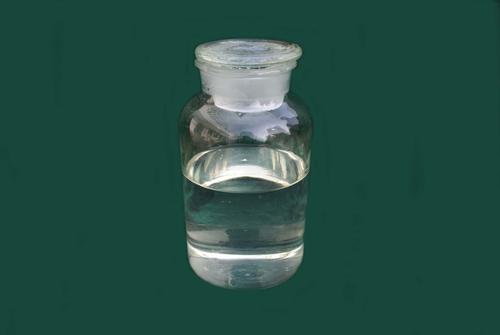[alias]Nitrate water, water, hydrogen nitrogen water.
[Molecular formula]HNO3

[naturenature]fiveValence nitrogenOxygen acid. Pure nitric acid is colorlesscolortransparent fuming liquid with special odor. meltpoint-42℃,boiling point83℃(without water),density1.5027g/cm3(25℃) . 68.4%NitrateAcid is an azeotropic mixture with the highest boiling point(121.9℃). in–41℃(freezing point), is white snow crystal . Nitric acid and water can be mixed freelySoluble,AlsoSoluble in etherEther, exothermic when dissolved. The content of commercially available dilute nitric acid is49%,slightlyyellow. Nitric acid can conduct electricity and is a strong monovalent acid. It is very unstable, and when exposed to heat or light for a certain period of time, it will decompose and release oxygen. The more concentrated nitric acid is easier to decompose. When concentrated nitric acid decomposes, it produces carbon dioxidenitrogen(NO2),+ 5 priceNitrogen is reduced to+4valence; when dilute nitric acid is decomposed,generate nitric oxide(NO), in the nitric acid molecule+ 5Valence nitrogenReverted to+2price. Visible concentratednitric acidIt is oxidizing with dilute nitric acid, but concentrated nitric acid is strongoxidizingAgent, canpassivatealuminum, remove gold,platinum, Rhodium,tantalum,IridiumAlmost all metals can be oxidized.reaction with ethanol will causeexplosion,Mixed with sawdust and organic matter, it can cause combustion. Concentrated nitric acid is extremely corrosive, and splashing on the skin can cause burns and stain yellow spots. It can also damage mucous membranes and respiratory tract.
[Application] Nitric acid is an important chemical raw material with a wide range of uses. It is widely used in chemical fertilizers, fine chemicals, printing and dyeing, chemical fibers, pharmaceuticals, Metallurgy, photographic materials and other industries, such as for the manufacture of ammonium nitrate, nitrophosphate fertilizer, calcium ammonium nitrate, potassium nitrate, calcium nitrate, silver nitrate and other chemical fertilizers and nitrate products. In organic synthesis, it is used to produce nitro compounds such as nitromethane, nitroethane, and dinitrobenzoic acid. In the printing and dyeing industry, it is used to synthesize intermediates such as p-nitroanisole and p-nitrophenol, and is also used as a corrosive agent for printing cylinders. In the pharmaceutical industry, it is used to synthesize intermediates such as p-nitroacetophenone, m-nitroaniline, and p-nitrobenzaldehyde. The paint industry is used to manufacture various nitro varnishes and nitro enamel. The rubber industry is used to manufacture the intermediate of accelerator M. The national defense industry is used to produce explosives, such as trinitrotoluene, nitroglycerin, picric acid, nitrocellulose and other metallurgical industries. It is used in the purification of rare earth metals and separation of precious metals, and in the catalyst industry for the production of live aluminum oxide. Nitric acid can also be used as a strong oxidant to oxidize aniline, alcohol and other chemicals. It can oxidize carbon into sulfur dioxide and sulfur into sulfur dioxide. Utilize its special effect on organic matter. Often used to identify substances containing protein (such as wool, feathers, etc.)
[Brief recipe]
①In industry, alkene nitric acid is often produced by ammonia oxidation. Ammonia can be catalytically oxidized with air (or oxygen) to nitrogen dioxide, dissolved in water to obtain about 60% nitric acid.
②90%-100% concentrated nitric acid can dehydrate dilute nitric acid, or it can be produced by reacting sulfuric acid and sodium nitrate (saltpeter).
③ A small amount of nitric acid is produced in the laboratory. Concentrated sulfuric acid and sodium nitrate can be mixed and heated in a retort, and the nitric acid vapor produced can be condensed to produce nitric acid.
[Safety and Protection] Nitric acid is a Class I acid corrosive product. Chemicals, strong alkali, calcium carbide, metal powder, etc. should be stored separately. Avoid sunlight exposure. Concentrated nitric acid should be transported by aluminum tanker, and dilute nitric acid should be transported or stored by stainless steel or FRP reinforced plastic tanker or storage tank. A small amount of concentrated nitric acid can be packed in acid-resistant ceramic cylinders, and dilute nitric acid can be packed in polyethylene plastic drums (10L, 20L). The packaging should be marked with “corrosive substances”; in case of fire, yellow sand, carbon dioxide fire extinguishers and mist water can be used to extinguish the fire, and be careful to prevent acid splashes when extinguishing the fire.
Human bodySkinContact with nitric acid can cause severe burns. Eye splashing is especially dangerous. Steam stimulates the lungsStimulateLarge. skinon touch,Rinse immediately with plenty of water,or use span>2%about 2% of baking sodasolutionafter washingre-bandage,Apply ointment if necessary.

 微信扫一扫打赏
微信扫一扫打赏

